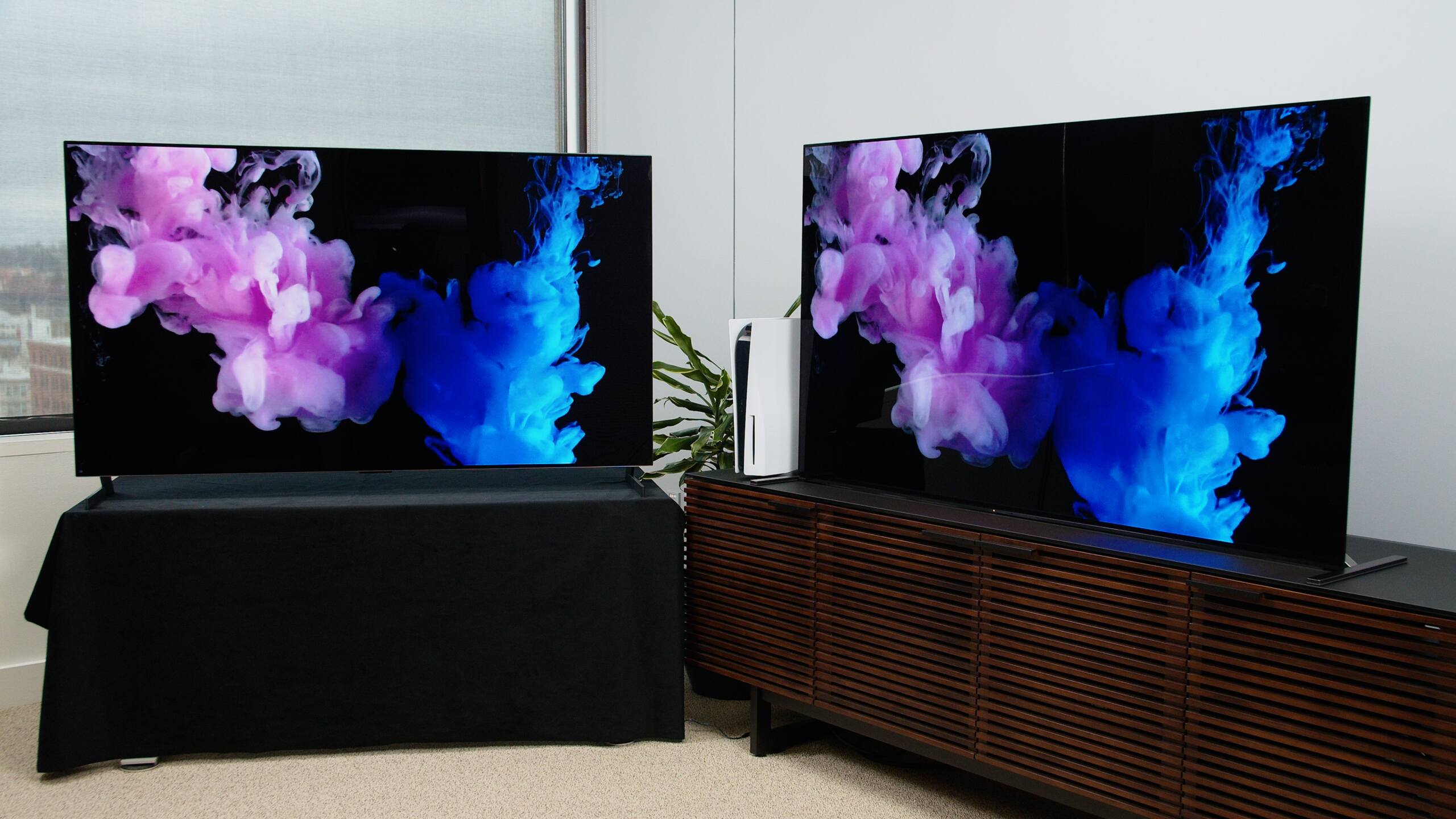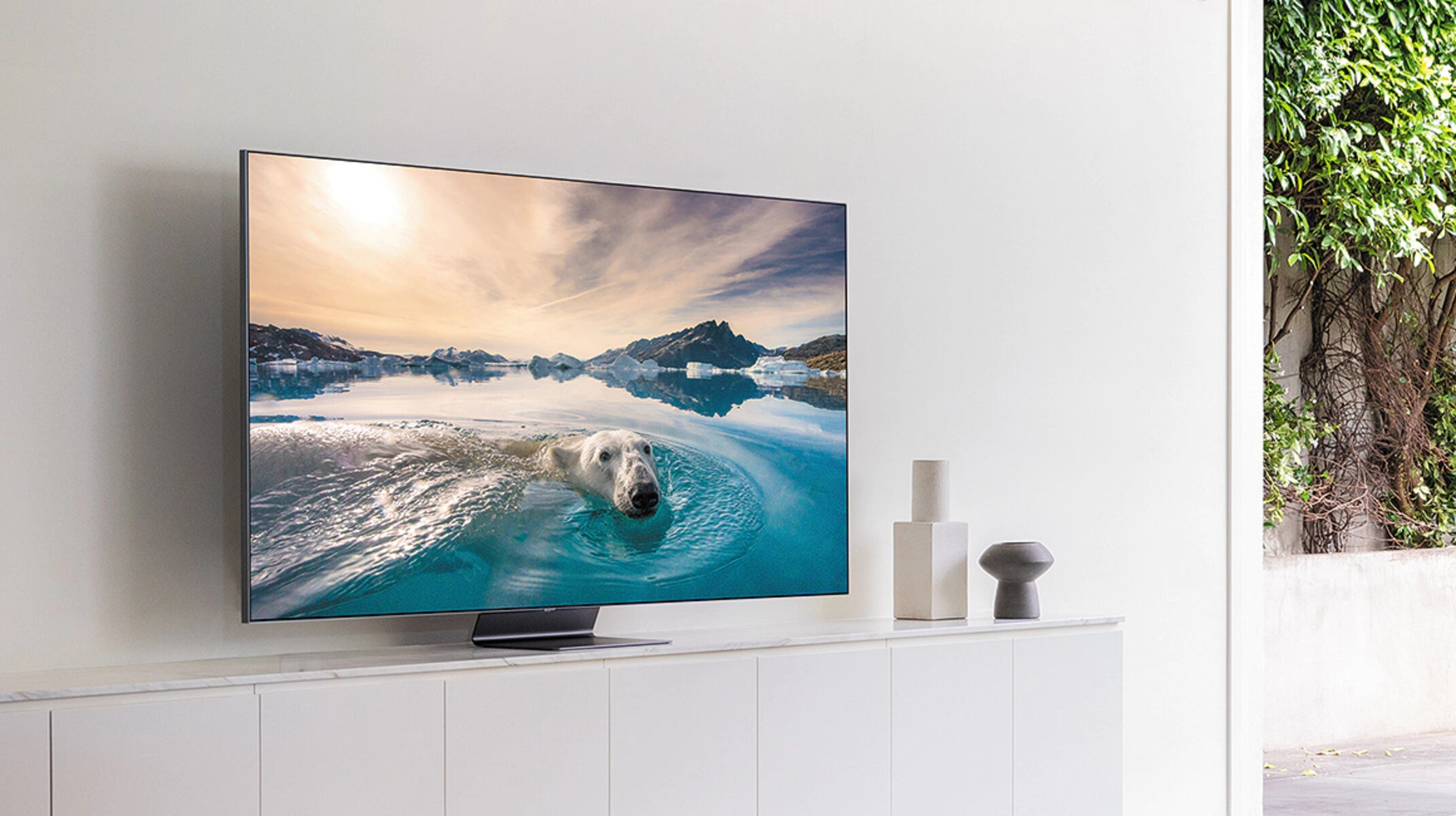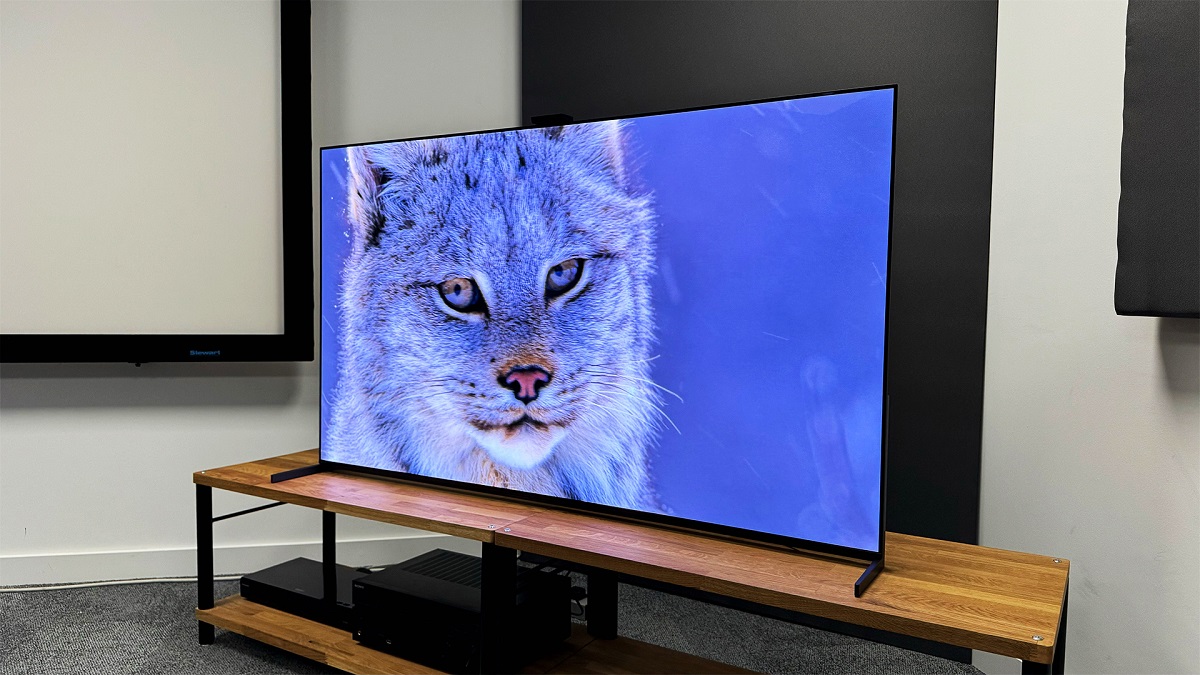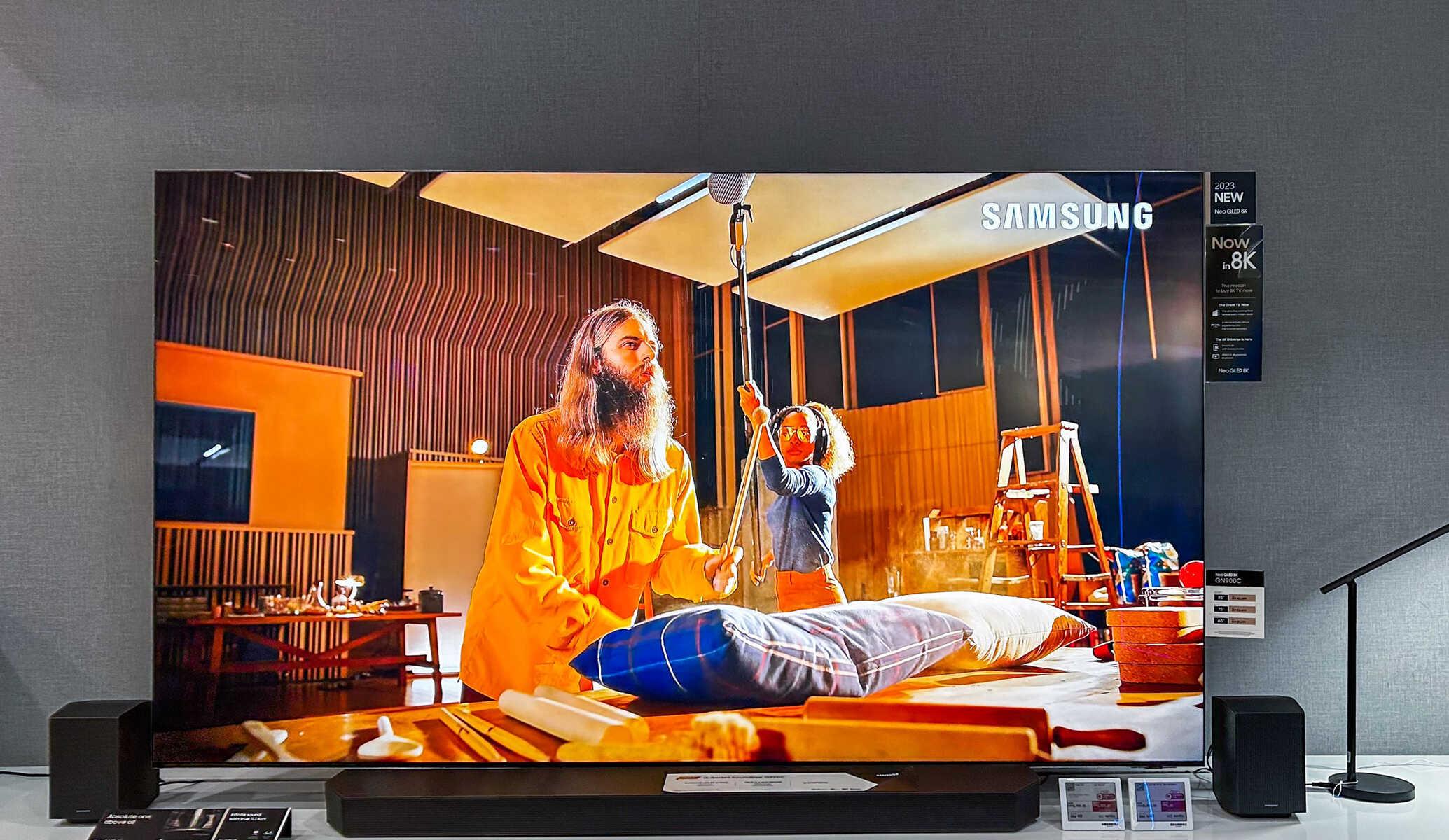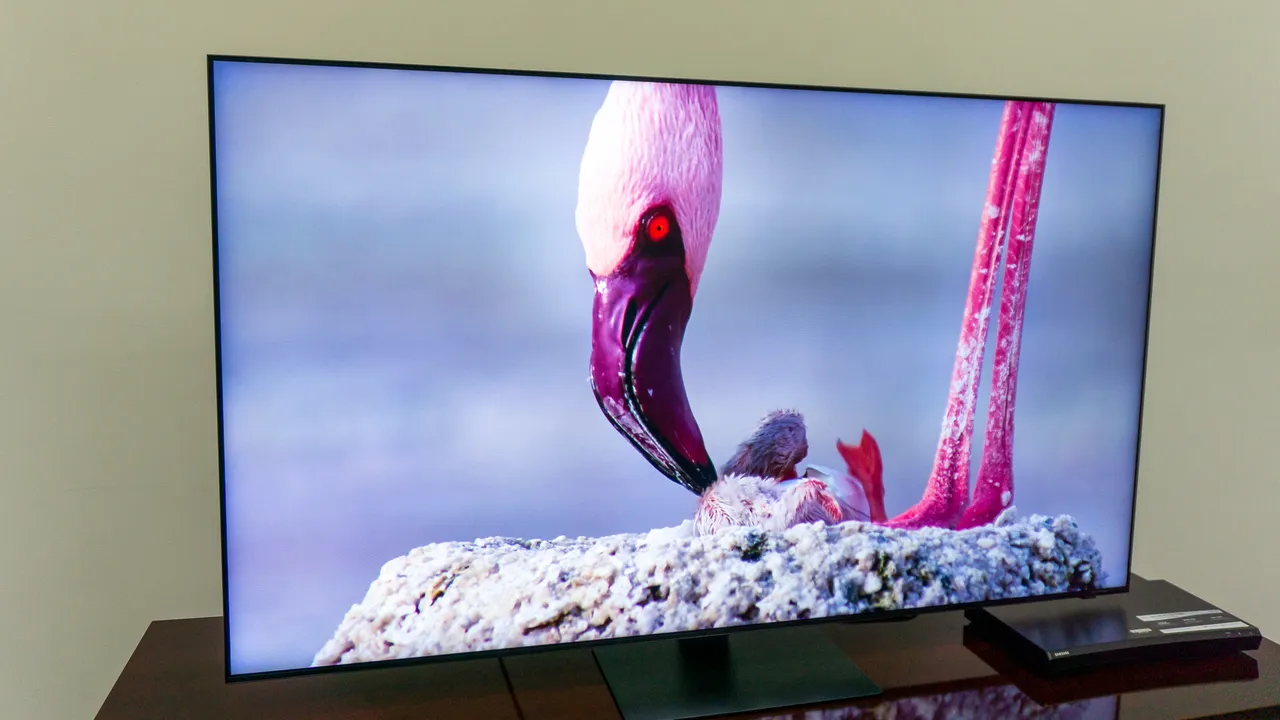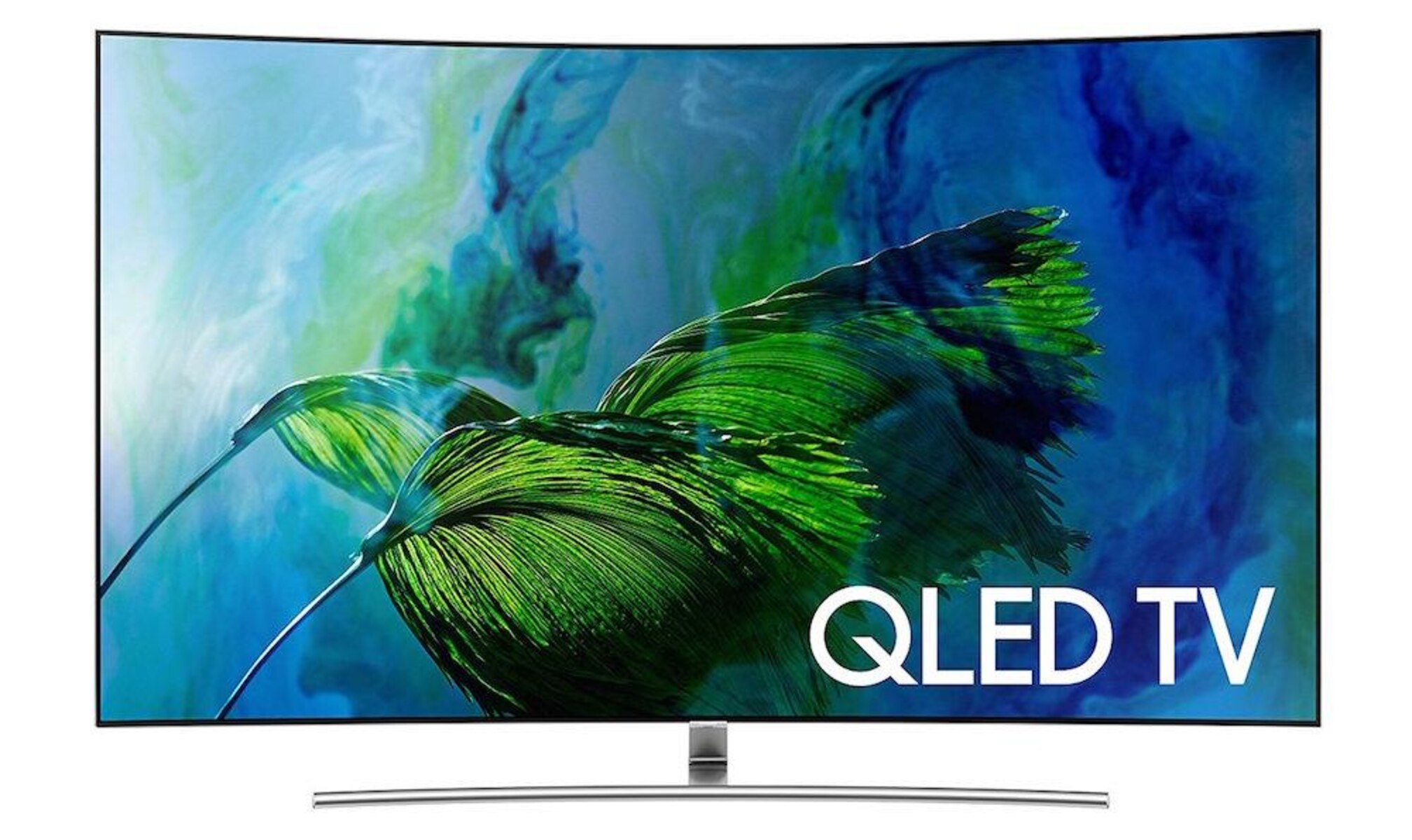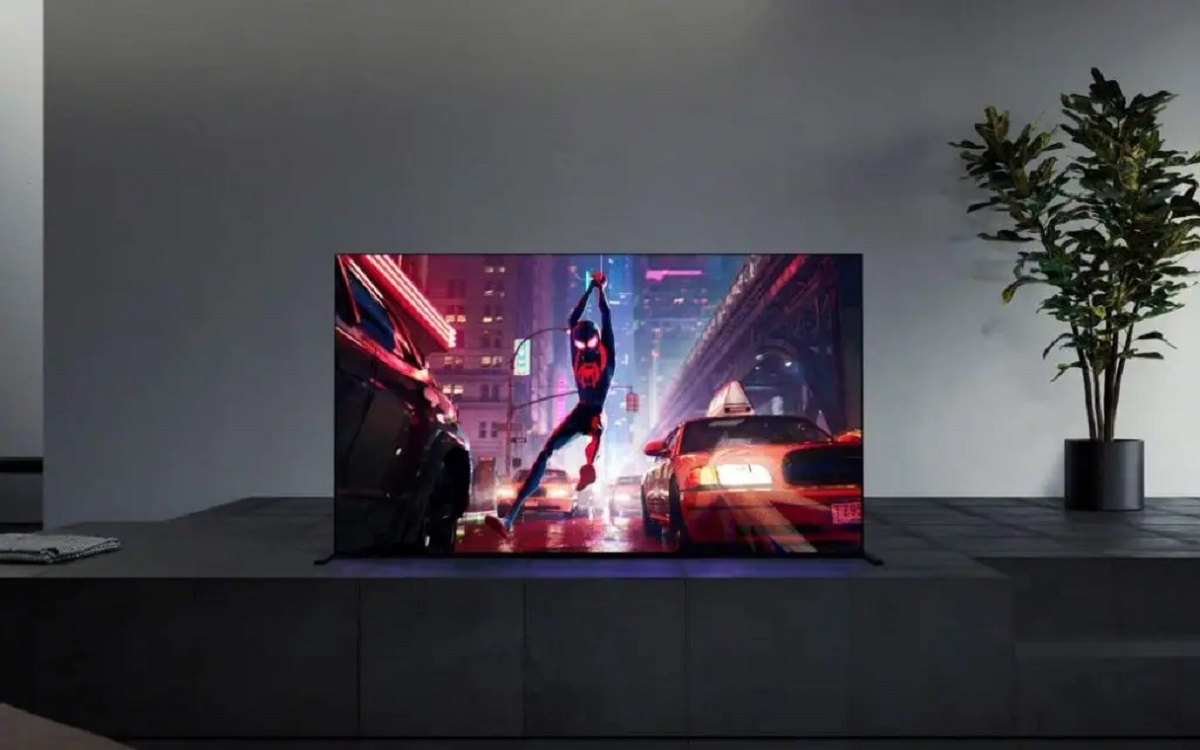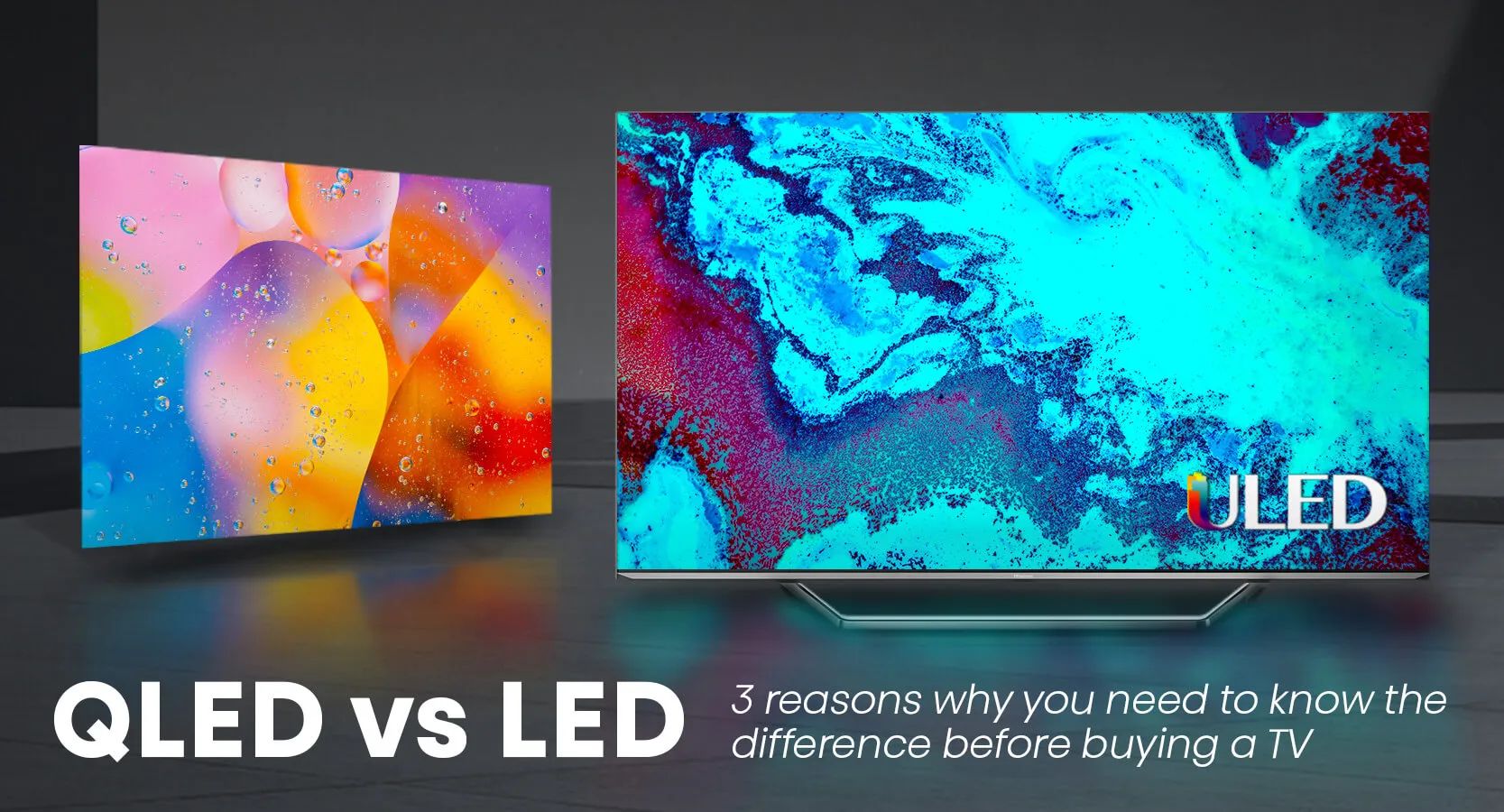Introduction
Welcome to the world of advanced television technology, where choosing the right TV can often be a difficult decision. With the wide range of options available, it’s crucial to understand the key differences between different types of TVs to make an informed choice. In this article, we will explore the differences between QLED TV and LED TV, two popular options in the market.
QLED (Quantum Light Emitting Diode) and LED (Light Emitting Diode) are two terms that you might have come across while shopping for a new TV. While both TVs provide exceptional picture quality, they are based on different display technologies. Understanding the differences between QLED TV and LED TV can help you decide which one is most suitable for your needs.
QLED TVs are the latest innovation in the world of television technology. They utilize Quantum Dot technology to deliver stunning visuals with enhanced color reproduction, brightness, and contrast. On the other hand, LED TVs have been in the market for some time and are known for their energy efficiency and affordability.
With this background in mind, let’s delve into the intricacies of QLED TV and LED TV to understand their respective features, benefits, and drawbacks. By the end of this article, you will have a clearer understanding of which TV technology is the best choice for your viewing experience and budget.
Overview of QLED TV
QLED TVs are a relatively new technology that has gained popularity in recent years. These TVs are known for their vibrant colors, impressive brightness levels, and high contrast ratios. The term “QLED” refers to the use of Quantum Dots, which are tiny semiconductor particles that emit light when exposed to electricity.
One of the key advantages of QLED TVs is their ability to produce a wide color gamut, resulting in rich and lifelike images. The Quantum Dots used in QLED TVs can accurately filter the light emitted by the TV’s backlight, allowing for more precise and intense color reproduction. This means you can enjoy vivid and realistic colors, whether you’re watching movies, sports, or playing video games.
In addition to the impressive color reproduction, QLED TVs also excel in terms of brightness. These TVs are capable of achieving higher peak brightness levels compared to other display technologies. This results in enhanced visibility, even in well-lit rooms or during daylight viewing. The brightness of QLED TVs also enhances the HDR (High Dynamic Range) experience, bringing out more details in both dark and bright scenes.
Another notable feature of QLED TVs is their high contrast ratio. The use of Quantum Dots allows for precise control over the backlight, resulting in deeper blacks and brighter whites. This enhances the overall visual experience, providing more depth and realism to the images on the screen. Whether you’re watching a suspenseful movie or playing a visually stunning game, the improved contrast of a QLED TV ensures that you don’t miss out on any detail.
Furthermore, QLED TVs often come with advanced image processing technologies such as local dimming, which further enhances the contrast by selectively dimming or brightening specific areas of the screen. This feature helps to reduce blooming and backlight bleed, resulting in sharper and more defined images.
It’s worth mentioning that QLED TVs typically offer wider viewing angles compared to other display technologies. This means that even if you’re sitting at an angle to the TV, you can still enjoy consistent colors and image quality. This is particularly useful if you have a large room or if you frequently watch TV with a group of people.
In summary, QLED TVs offer vibrant colors, excellent brightness levels, high contrast ratios, and wide viewing angles. They are a great choice for those who prioritize vivid and realistic visuals, whether for gaming, movies, or everyday TV viewing.
Overview of LED TV
LED TVs have been a popular choice among consumers for several years now. LED, which stands for Light Emitting Diode, is a display technology that utilizes LEDs to illuminate the screen. These TVs offer a range of benefits, including energy efficiency, affordability, and a wide selection of sizes and models.
One of the main advantages of LED TVs is their energy efficiency. LEDs are known for consuming less power compared to other display technologies, such as Plasma or LCD. This means that LED TVs are not only environmentally friendly but also help you save on your electricity bills in the long run. Their energy-saving capabilities make LED TVs an attractive option for those looking for an eco-conscious and cost-effective television.
Another notable feature of LED TVs is their affordability. LED technology has become more accessible and affordable over the years, allowing consumers to enjoy high-quality televisions at a reasonable price. LED TVs come in a wide range of sizes and models, catering to different budgets and requirements. Whether you’re looking for a compact TV for your bedroom or a large-screen TV for your living room, there are plenty of LED options to choose from.
LED TVs also offer a good overall picture quality. While they may not match the color accuracy and contrast ratio of more advanced technologies like QLED or OLED, LED TVs still deliver sharp images with decent color reproduction. The image quality of LED TVs can vary depending on the specific model and brand, so it’s important to consider factors like resolution, panel type, and image processing capabilities when making a purchase.
Furthermore, LED TVs are known for their durability and longevity. LEDs have a long lifespan compared to other display technologies, ensuring that your TV will last for many years without significant degradation in picture quality. LED panels are also less prone to burn-in, which can occur with technologies like Plasma. This means you can use your LED TV worry-free, even if you like to watch channels with static logos or play video games for extended periods.
When it comes to viewing angles, LED TVs generally offer satisfactory performance. However, it’s worth noting that the viewing experience may vary depending on the specific model. Some LED TVs may experience a slight loss in color accuracy and contrast when viewed from extreme angles, so it’s always a good idea to check the viewing angle specifications before making a purchase.
In summary, LED TVs are known for their energy efficiency, affordability, durability, and decent picture quality. They are a great choice for those looking for a reliable and cost-effective television option without compromising on overall performance.
Display Technology Comparison
When it comes to display technology, there are significant differences between QLED and LED TVs. Understanding these distinctions can help you make an informed decision based on your viewing preferences and requirements.
QLED TVs utilize Quantum Dot technology, which involves a layer of quantum dots that emit light when exposed to electricity. These quantum dots are extremely small and can produce a wide range of colors, resulting in vibrant and accurate color reproduction. QLED TVs tend to excel in color accuracy, providing a more realistic and immersive viewing experience.
On the other hand, LED TVs use Light Emitting Diodes to illuminate the screen. LED technology is more mature and widespread, making LED TVs more affordable compared to QLED TVs. LED TVs offer decent color reproduction, but they may not match the accuracy and vibrancy of QLED TVs.
In terms of brightness, QLED TVs generally outperform LED TVs. QLED TVs are capable of achieving higher peak brightness levels, which is especially beneficial for HDR content. The brighter display enhances details in both dark and bright scenes, resulting in a more visually captivating experience. However, it’s worth noting that high-end LED TVs can still provide impressive brightness levels, especially in well-lit environments.
When comparing contrast ratios, QLED TVs have an advantage over LED TVs. The Quantum Dot technology in QLED TVs allows for more precise control over the backlight, resulting in deeper blacks and brighter whites. This leads to improved contrast and better image depth, making QLED TVs particularly appealing for those who enjoy watching movies with high contrast scenes.
Another important aspect to consider is the viewing angle. QLED TVs generally offer wider viewing angles compared to LED TVs. This means that the picture quality and color accuracy remain consistent even when viewing the screen from different angles. LED TVs may experience a slight loss in color and contrast when viewed from extreme angles.
In summary, QLED TVs excel in color accuracy, brightness, and contrast ratio, making them a great choice for those seeking immersive and vibrant visuals. On the other hand, LED TVs are more affordable and offer decent color reproduction, making them a suitable option for budget-conscious consumers.
Picture Quality Comparison
When it comes to picture quality, both QLED and LED TVs have their own strengths and considerations to keep in mind.
QLED TVs are known for their exceptional color accuracy and vibrant visuals. With the use of Quantum Dot technology, QLED TVs can reproduce a wide color gamut with precise and vivid hues. This results in more lifelike and immersive pictures, making QLED TVs a great choice for those who value stunning color reproduction, whether it’s for watching movies, enjoying nature documentaries, or gaming.
LED TVs, on the other hand, deliver satisfactory picture quality at a more affordable price point. While they may not match the color accuracy of QLED TVs, LED TVs still offer decent color reproduction and sharp images. LED TVs are well-suited for general viewing, such as watching regular TV shows, news, or sports, where color accuracy may not be as critical.
Another aspect to consider when comparing picture quality is the ability to display deep blacks and bright whites, often referred to as contrast ratio. QLED TVs typically have better contrast ratios compared to LED TVs, resulting in more pronounced differences between light and dark scenes. This allows for improved image depth and more realistic rendering of shadows and highlights, enhancing the overall visual experience.
When it comes to motion handling, both QLED and LED TVs can deliver smooth and blur-free images. However, higher-end QLED models often come with advanced motion interpolation and image processing technologies, which can further reduce motion blur and enhance the clarity of fast-moving scenes, such as action movies or sports events. LED TVs may not offer the same level of motion processing capabilities, but they still provide satisfactory performance for most casual viewers.
Another factor to consider is the resolution. Both QLED and LED TVs are available in various resolutions, including Full HD (1080p), 4K Ultra HD (2160p), and even 8K (4320p) in the case of QLED TVs. The higher the resolution, the sharper and more detailed the images will be. It’s worth noting that while 4K and 8K resolutions can provide a noticeable improvement in picture quality, the difference may not be as apparent on smaller screen sizes.
In summary, QLED TVs offer exceptional color accuracy, vibrant visuals, and better contrast ratios, making them an ideal choice for those who prioritize picture quality. LED TVs, on the other hand, provide satisfactory color reproduction, sharp images, and affordability, making them a suitable option for general viewing needs and budget-conscious consumers.
Color Accuracy Comparison
Color accuracy is a crucial aspect to consider when comparing QLED and LED TVs. It refers to how faithfully a TV can reproduce colors and present them as intended by the content creators.
QLED TVs are known for their exceptional color accuracy. The use of Quantum Dot technology allows QLED TVs to produce a wide color gamut, resulting in vibrant and accurate color reproduction. The Quantum Dots can emit light across a broad spectrum, enabling QLED TVs to display a wide range of colors with precision and richness.
QLED TVs can achieve high levels of color accuracy, making them a popular choice for those who prioritize realistic and immersive visuals. Whether it’s the lush green landscapes, vivid blues of the ocean, or intricate details of a costume, QLED TVs can reproduce colors with accuracy and depth, bringing content to life.
On the other hand, LED TVs offer decent color accuracy, but they may not match the level of precision and vibrancy achieved by QLED technology. LED TVs use a backlighting system that illuminates the screen, and different LED TVs may have variations in color accuracy. While LED TVs can still provide enjoyable viewing experiences, especially for everyday content like TV shows or sports, the color reproduction might not be as accurate or vibrant compared to QLED TVs.
It’s important to note that color accuracy can vary among different brands and models, even within the same display technology. Higher-end LED TVs may have advanced image processing capabilities that enhance color accuracy, while lower-end QLED TVs may not deliver the same level of precision.
Another factor that can impact color accuracy is the content source. Both QLED and LED TVs rely on the quality of the content being displayed. High-quality, well-produced content, such as Blu-ray movies or streaming services that support HDR (High Dynamic Range), can make a noticeable difference in color accuracy regardless of the TV technology being used.
Overall, QLED TVs have an advantage in color accuracy due to their Quantum Dot technology, offering precise and vibrant color reproduction. However, it’s essential to consider factors such as the specific model and brand as well as the quality of the content being viewed. LED TVs can still provide enjoyable color performance, particularly in everyday viewing scenarios.
Contrast Ratio Comparison
When comparing QLED and LED TVs, one important aspect to consider is the contrast ratio. The contrast ratio of a TV refers to the difference between the brightest whites and the darkest blacks that can be displayed on the screen. A higher contrast ratio enhances image depth and improves overall picture quality.
QLED TVs typically have a superior contrast ratio compared to LED TVs. The Quantum Dot technology used in QLED TVs allows for precise control over the backlight, resulting in deeper blacks and brighter whites. This enhances the overall contrast of the image, making it more visually striking and realistic. With better contrast, QLED TVs can effectively display subtle details in both dark and bright areas of the screen, providing a more immersive viewing experience.
On the other hand, LED TVs offer decent contrast ratios, but they may not match the level of performance achieved by QLED technology. LED TVs use a backlighting system, and the quality of the contrast can vary among different LED TV models. While LED TVs can still provide satisfactory contrast levels, especially when viewed in a dimly lit room, they may not produce the same depth and detail in dark scenes as QLED TVs.
It’s worth noting that contrast ratio depends on several factors, including the specific model and brand of TV, the quality of the panel used, and the level of image processing technology integrated into the TV. High-end LED TVs may have advanced local dimming features that can enhance contrast by dynamically adjusting the backlight in specific areas of the screen. However, these features are more commonly found in QLED TVs, where the Quantum Dot technology itself allows for superior control over the backlight and better contrast performance.
When it comes to watching movies with high contrast scenes or playing games with dark and atmospheric settings, QLED TVs with their higher contrast ratios offer a more immersive and detailed experience. However, for everyday viewing scenarios like watching TV shows or sports, where contrast may not be as critical, LED TVs can still provide satisfactory results.
In summary, QLED TVs generally offer better contrast ratios compared to LED TVs, resulting in improved image depth, more realistic rendering of shadows and highlights, and an overall enhanced visual experience. However, it’s important to consider the specific model and brand of the TV, as LED TVs with advanced features like local dimming can bridge the gap to some extent and provide satisfactory contrast performance.
Viewing Angle Comparison
The viewing angle of a TV refers to the maximum angle at which the screen can be viewed without a significant loss in color accuracy and picture quality. A wider viewing angle allows viewers to enjoy consistent visuals from various positions, making it an important consideration when comparing QLED and LED TVs.
QLED TVs generally offer wider viewing angles compared to LED TVs. This means that even when viewing the TV from off-center positions or extreme angles, the color accuracy and picture quality remain consistent. QLED TVs achieve this thanks to the advanced panel technology used in combination with the Quantum Dot technology. This wider viewing angle is beneficial for larger rooms or when watching TV with a group of people, as it ensures that everyone can enjoy a high-quality viewing experience regardless of their seating position.
On the other hand, LED TVs may experience some loss of color accuracy and picture quality when viewed from extreme angles. This is because LED TVs use backlighting systems that can have limitations in maintaining consistent image quality across wider viewing angles. However, it’s important to note that the specific model and brand of the TV can also impact viewing angle performance. Higher-end LED TVs may incorporate technologies like improved panel coatings or wider viewing angle filters to mitigate this issue to some extent.
When it comes to smaller rooms or individual viewing, the difference in viewing angles between QLED and LED TVs may not be as noticeable. In these cases, LED TVs can still provide satisfactory viewing experiences where viewers are positioned directly in front of the screen.
Ultimately, the choice between QLED and LED TVs regarding viewing angles depends on the specific viewing requirements and setup. If you have a large room or frequently watch TV with multiple viewers, a QLED TV with its wider viewing angle capabilities may be a better choice. On the other hand, if you have a smaller room or view the TV primarily from directly in front, an LED TV can still provide satisfactory results.
It’s important to consider the specific model and brand when evaluating the viewing angle performance of any TV, as features and technologies can vary. Additionally, it’s always recommended to test the viewing angle of a TV in person when possible to ensure it meets your specific viewing needs.
Energy Efficiency Comparison
Energy efficiency is an important factor to consider when choosing a TV, both for environmental reasons and cost savings. Let’s compare the energy efficiency of QLED and LED TVs to help you make an informed decision.
LED TVs are well-known for their energy efficiency. LED stands for Light Emitting Diode, and this technology consumes less power compared to other display technologies, such as Plasma or LCD. LED TVs use LED backlights to illuminate the screen, and these LEDs are highly efficient in converting electricity into light, resulting in lower energy consumption.
The energy efficiency of LED TVs not only helps to reduce your carbon footprint but also translates into cost savings on your electricity bill. Over time, the lower energy consumption of LED TVs can result in significant savings, particularly if you use your TV frequently or leave it on for extended periods. This makes LED TVs an attractive option for eco-conscious consumers and those looking to reduce their energy expenses.
QLED TVs, on the other hand, consume more power compared to LED TVs. This is mainly due to the use of additional technologies, such as Quantum Dot layers and more advanced image processing features. QLED TVs often require higher brightness levels and processing power, which contribute to increased energy consumption compared to LED TVs.
However, it’s important to note that the energy efficiency of QLED TVs has improved over the years with advancements in technology. Manufacturers have been working towards optimizing power usage and reducing energy consumption in QLED TVs, which means that newer models may have improved energy efficiency compared to older ones.
When comparing energy efficiency, it’s worth considering other factors that can impact power consumption, such as screen size and usage patterns. Larger screens tend to consume more power than smaller screens, regardless of the display technology employed. Additionally, the brightness level, picture settings, and usage habits, such as leaving the TV on when not in use, can also affect energy consumption.
In summary, LED TVs are known for their energy efficiency, providing cost savings and environmental benefits. QLED TVs, while consuming more power compared to LED TVs, have seen improvements in energy efficiency over time. It’s important to keep in mind your specific usage patterns, screen size preference, and the power-saving features available in different TV models when considering the overall energy efficiency of a TV.
Price Comparison
When it comes to the price comparison between QLED and LED TVs, there are several factors to consider, including the specific models, screen sizes, and features offered.
LED TVs are generally more affordable compared to QLED TVs. LED technology has been in the market for a while, and manufacturers have made significant advancements, resulting in more cost-effective production and lower prices. LED TVs come in a wide range of screen sizes and models, catering to different budgets and preferences. Whether you’re looking for a small-sized TV for your bedroom or a large-screen TV for your living room, there’s usually an LED TV available at a price point that suits your budget.
On the other hand, QLED TVs tend to be pricier compared to LED TVs. The use of advanced Quantum Dot technology, coupled with other premium features such as enhanced color accuracy and better contrast ratios, contribute to the higher price tag of QLED TVs. However, it’s important to note that the price of QLED TVs has become more competitive in recent years, and there are now more affordable options available. Entry-level and mid-range QLED TVs offer a compromise between price and performance, making QLED technology more accessible to a broader range of consumers.
Screen size is another factor that influences the price of both QLED and LED TVs. Generally, larger-sized TVs tend to be more expensive than smaller-sized ones, regardless of the display technology used. Therefore, if you’re on a tight budget, opting for a smaller-sized TV may help you save money, regardless of whether it’s an LED or QLED model.
It’s worth mentioning that the price difference between QLED and LED TVs may vary depending on the specific models and brands. While QLED technology is generally considered a premium tier, there may be instances where high-end LED TVs with advanced features or larger screen sizes can have comparable or even higher prices than entry-level QLED TVs.
Ultimately, the choice between QLED and LED TVs depends on your budget and the features and performance you prioritize. If you’re seeking the most affordable option, LED TVs offer a wide range of choices to fit various budgets. However, if you’re willing to invest in enhanced color accuracy, better contrast ratios, and premium features, QLED TVs may be worth the higher price.
It’s recommended to research and compare prices of different TV models, read reviews, and consider your own preferences and budgetary constraints to make the best decision for your needs and wallet.
Conclusion
After comparing QLED and LED TVs across various aspects, it’s clear that both display technologies have their own strengths and considerations. QLED TVs excel in areas such as color accuracy, brightness, contrast ratio, and wider viewing angles, providing a more immersive and lifelike visual experience. LED TVs, on the other hand, offer affordability, energy efficiency, satisfactory picture quality, and a wide range of sizes and models to choose from.
When choosing between QLED and LED TVs, it’s essential to consider your viewing preferences, budget, and specific requirements. If you value vibrant and accurate colors, stunning visual performance, and have a higher budget, QLED TVs may be the ideal choice. On the other hand, if energy efficiency, affordability, and general viewing needs are your priorities, LED TVs can provide a satisfactory viewing experience without breaking the bank.
It’s important to keep in mind that the specific model and brand of the TV can also influence the performance and features offered. Higher-end LED TVs may incorporate advanced image processing technologies and local dimming, narrowing the gap in picture quality and contrast ratio compared to entry-level QLED TVs.
Prioritize what matters most to you in a TV, whether it’s color accuracy, price, energy efficiency, or any other feature, and consider the specific trade-offs between QLED and LED technologies in those areas. Additionally, it’s always recommended to test the TVs in person, read user reviews, and consult experts for a more personalized recommendation based on your specific needs.
Remember, the ultimate goal is to find the TV that best suits your preferences, budget, and viewing habits – one that will provide you with countless hours of enjoyment and entertainment.







